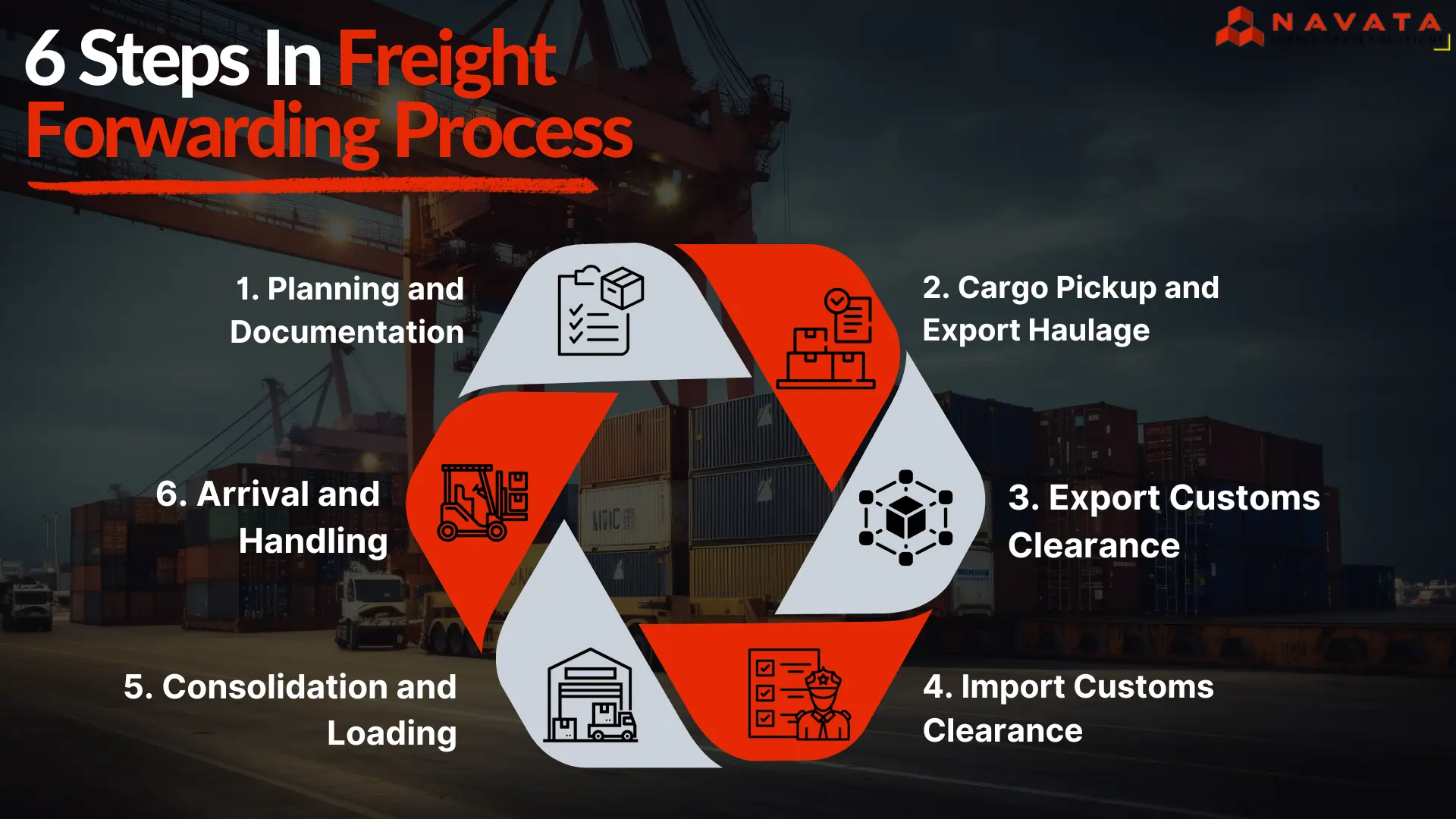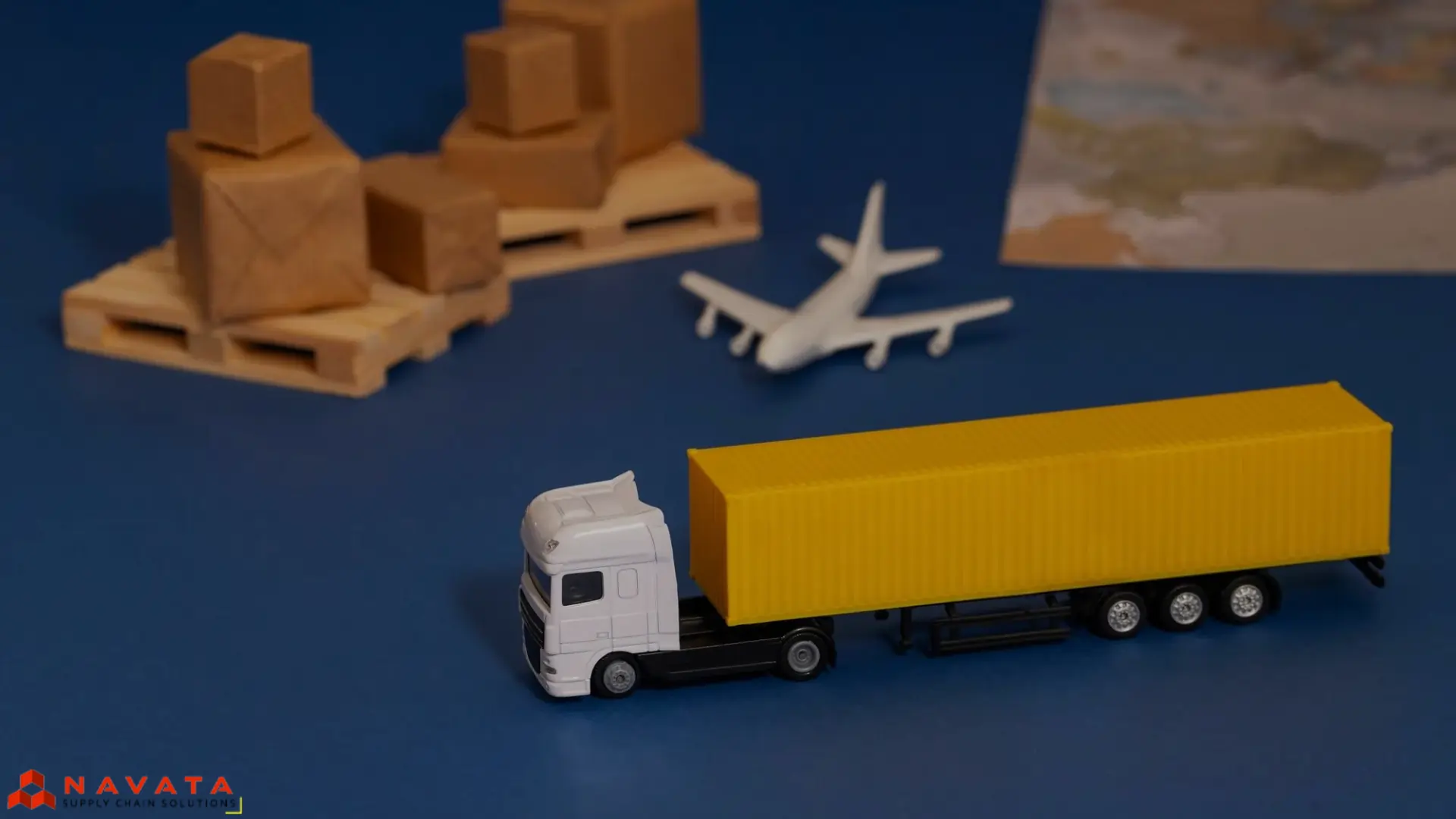What is Freight Forwarding Process?
Freight forwarding services are for certain companies and individuals who look for mediators to shift goods from one place to another, through air, water, rail, or roadways. It is a process in which planning, organizing and monitoring of cargo flow are done so that it reaches safely and efficiently at the destination.
Freight forwarders are third-party brokers dealing with various shippers and transportation services who organize the shipment logistics down to the last detail like documentation, customs clearance, cargo insurance, and more. They use their network to navigate the intricacies of global trade, offering solutions that are tailor-made to client’s particular needs.

1. Planning and Documentation
The process of freight forwarder begins with the client over shipment details regarding what is to be shipped, its quantity, time frames of delivery, and any special handling requirements. The forwarder afterward assesses the best method of transportation—whether air, sea, or land—and selects appropriate carriers, planning the route according to cargo type and kind of packaging requirements.
Key documents needed are the bill of lading, a commercial invoice listing the goods being delivered along with their value for customs, and a packing list detailing what has been packed into each package. These are items whose accurate documentation can clear one of the everyday delays and problematic issues that often complicate shipment procedures through customs to their destination in good timing.
The following is the most significant documentation needed when exporting cargo:
- Commercial invoice
- Packing list
- Export shipping Bill
- Bill of lading
- Certificate of origin
- Letter of credit – if applicable
- Insurance certificate
- Declaration of hazardous cargo – if applicable
2. Cargo Pickup and Export Haulage
After finalizing shipment details the freight forwarder organizes cargo pickup from the supplier. In the process coordination is arranged in ensuring that the goods are actually ready and well packaged. The forwarder picks the most appropriate way of transport according to the size and destination of the shipment—for example, using roads via trucks or rails via trains.
The forwarder negotiates with local carriers for pickup scheduling and cargo following-up, hence proper coordination in case of transit problems, safety and time become essential. The forwarder handles it carefully to avoid damage and uses mechanism of tracking for progress. This proactive approach ensures that cargo arrives on-time at port for the next stage of its journey.
You May Also Like to Read: What Is Freight Forwarding: Types, Pros and Cons
3. Export Customs Clearance
Customs clearance is an important process in freight forwarding. It starts by presenting required documents to customs authorities. Notably, the key documents include the Bill of Lading, Commercial Invoice, Packing List, any export licenses or certificatess. Precise and on-time submissions will go a long way in efficiently avoiding shipment delays resulting from the initiation of proceedings by the customs.
Once documents are submitted the customs inspection process starts and customs authorities go through the paperwork and view or physically inspect cargo at this stage to ensure that it is in compliance with all regulations and that declared information is correct or not in the shipment. If any problems arise, such as errors in documents or non-compliance with regulations then these have to be rectified immediately by the forwarder to prevent delay.
4. Import Customs Clearance
When the shipment arrives at its destination, customs authorities check the import documents. This process can start before the cargo physically arrives. Freight forwarders or customs brokers submit required documents like the Bill of Lading and Commercial Invoice to ensure everything complies with local regulations. Customs may also inspect the cargo. Addressing any issues quickly helps prevent delays. Proper documentation and compliance are essential for a smooth and timely customs clearance process.
5. Consolidation and Loading
Freight consolidation and loading are the most vital steps in the transportation process, as they ensure that delivered cargo is moved effectively and safely. Consolidation is the process of merging several small shipments from clients/suppliers into one big shipment. This maximizes space, cuts down costs, and provides ease of the transport process through the gathering of goods to one destination.
During the process of loading, the cargo gets containerized or palletized as well as loading cargo into shipping containers and sealing the same before being shipped out. The forwarder examines the cargo for proper packing, securing, and protection from damage during transit which also includes an examination of the cargo to ensure proper packing using the appropriate materials, proper arrangements that will prevent any shifting, and freedom from danger likely to cause injury to the vessel, equipment, and workers who will be handling the consignment.
6. Arrival and Handling
Cargo is finally discharged and checked for visible damages and shortages after reaching the destination port. The freight forwarder then undertakes local transportation, where trucks or trains transport the cargo to the final delivery point. Proper timing and safety in delivery are crucial, and the forwarder keeps a constant eye on the shipment to alert any probable problem in the discharge of goods.
Finally, all documents relating to the transaction should be completed satisfactorily, and the transactions concluded, which signifies that the whole process of delivery has been completed

Conclusion
A comprehensive and significant service within international business, the process of freight forwarding enables consignments to move efficiently, safely, and timely. From the planning and documentation right up to the consolidation and final delivery of shipment products, it is the minute details that a freight forwarder deals with. Their experience in navigating international shipping, regulations, and requirements and operating with a number of carriers assures the deliveries without a hitch or delay.
The role of a reliable freight forwarder renders a compulsion for such a business to help it streamline its logistics activity, reduce the cost, and ensure continued operation in the international market.
Thanks For Reading: Freight Forwarding Process
Powered By 360Presence
FAQ
What is freight forwarding process?
Freight forwarding is the process of planning, organizing, and monitoring the transportation of goods from one place to another through air, water, rail, or roadways to ensure they reach their destination safely and efficiently.
What is the freight forwarding planning process?
The freight forwarding planning process involves assessing shipment details, selecting the best transportation method, coordinating carriers, and preparing necessary documentation to ensure efficient, timely, and safe delivery of goods.
What steps are involved in cargo pickup and export haulage?
Cargo pickup involves coordinating with local carriers for scheduling and ensuring goods are ready and well-packaged. Export haulage includes selecting the appropriate transport method and tracking the shipment to ensure timely arrival at the port.
How does import customs clearance work in freight forwarding?
Import customs clearance involves submitting required documents to customs authorities before the cargo arrives at its destination, ensuring compliance with local regulations and addressing any issues to prevent delays.
What is the job of a freight forwarder?
The job of a freight forwarder is to manage the logistics of shipping goods, including planning transportation routes, coordinating with carriers, handling documentation, ensuring customs compliance, and arranging cargo insurance to facilitate efficient and secure delivery.


3 Comments
vinod gupta
This article perfectly explains the value of working with experienced international freight carriers. With global trade expanding, businesses need trusted partners who can handle customs, documentation, and on-time delivery across borders. Excellent read!
https://bafcointl.com/